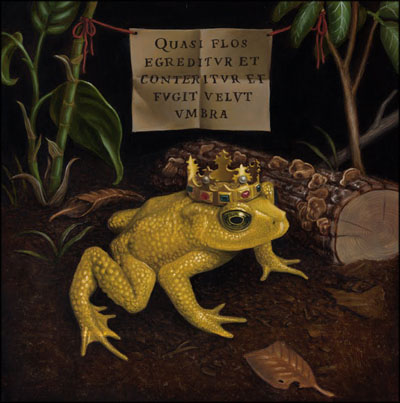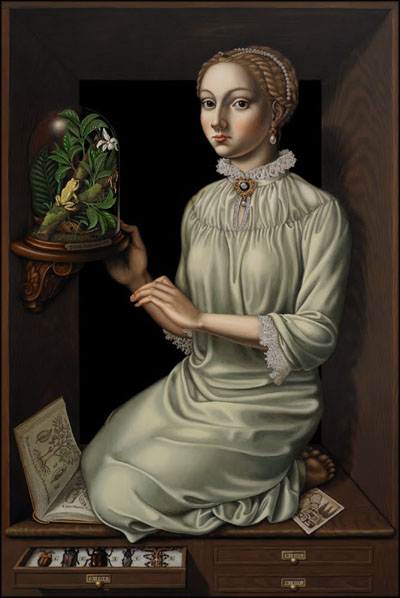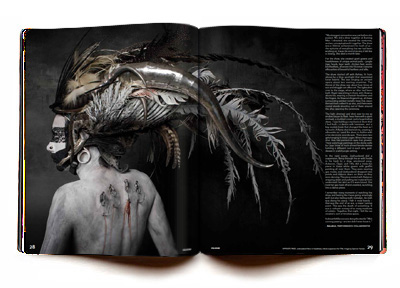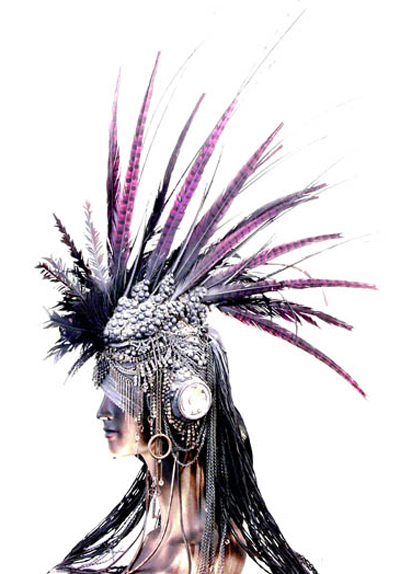
“Bufo Periglenes” by Madeline von Foerster. Oil and egg tempera on panel. 8″ x 8″
Shortly, the astounding artist Madeline von Foerster (previously mentioned here and here, and featured in Issue 02 of Coilhouse Magazine) will be showing her most recent series of paintings, “The Golden Toad” at the Roq La Rue Gallery in Seattle, WA. (Her work will be hanging alongside several exquisite pieces by her good friend and contemporary, Benjamin A. Vierling.) Foerster’s exhibition statement:
“This new series of paintings envisions fairy tales of the future. The current, unprecedented devastation of Earth’s wildernesses foretells a time when the great forests are gone, and with them, half the animal species with whom we share the world today. In comparison, the present will surely appear as a sort of Golden Age, abundant with lush forests and wondrous beasts — what sort of tales will they inspire?”

“Frog Cabinet” by Madeline von Foerster. Oil and egg tempera on panel. 18″ x 24″
“Stylistically, these artworks suggest the rich paintings from the School of Fontainebleau, a sixteenth century efflorescence of French Art, which exalted the enchanted forest. An aura of mystery and possibility pervades the paintings, which are meticulously rendered using an uncommon Renaissance mixed-technique of oil and egg tempera.”
“Although imagining the future, a common theme of the paintings is memory. While researching these works, the artist hunted for a fairytale titled “The Golden Toad,” which she was certain she had read. However, memory was deceiving her, for the Golden Toad (Bufo periglenes) is actually a Costa Rican amphibian, recently extinct. Ironically, though humans are responsible for the planet’s vanishing forests and extirpated species, it is in human imagination and memory that these lost treasures will continue to exist. Therefore, the Golden Toad, now gone, returns in mythical form, to remind us what we can still save.”

“The Tale of the Golden Toad” by Madeline von Foerster. Oil and egg tempera on panel. 24″ x 36″
The Madeline Von Foerster/Benjamin A. Vierling show at Roq La Rue Gallery opens this coming Friday night, July 08, and runs to August 06, 2011.














